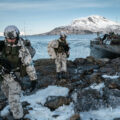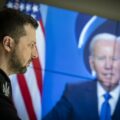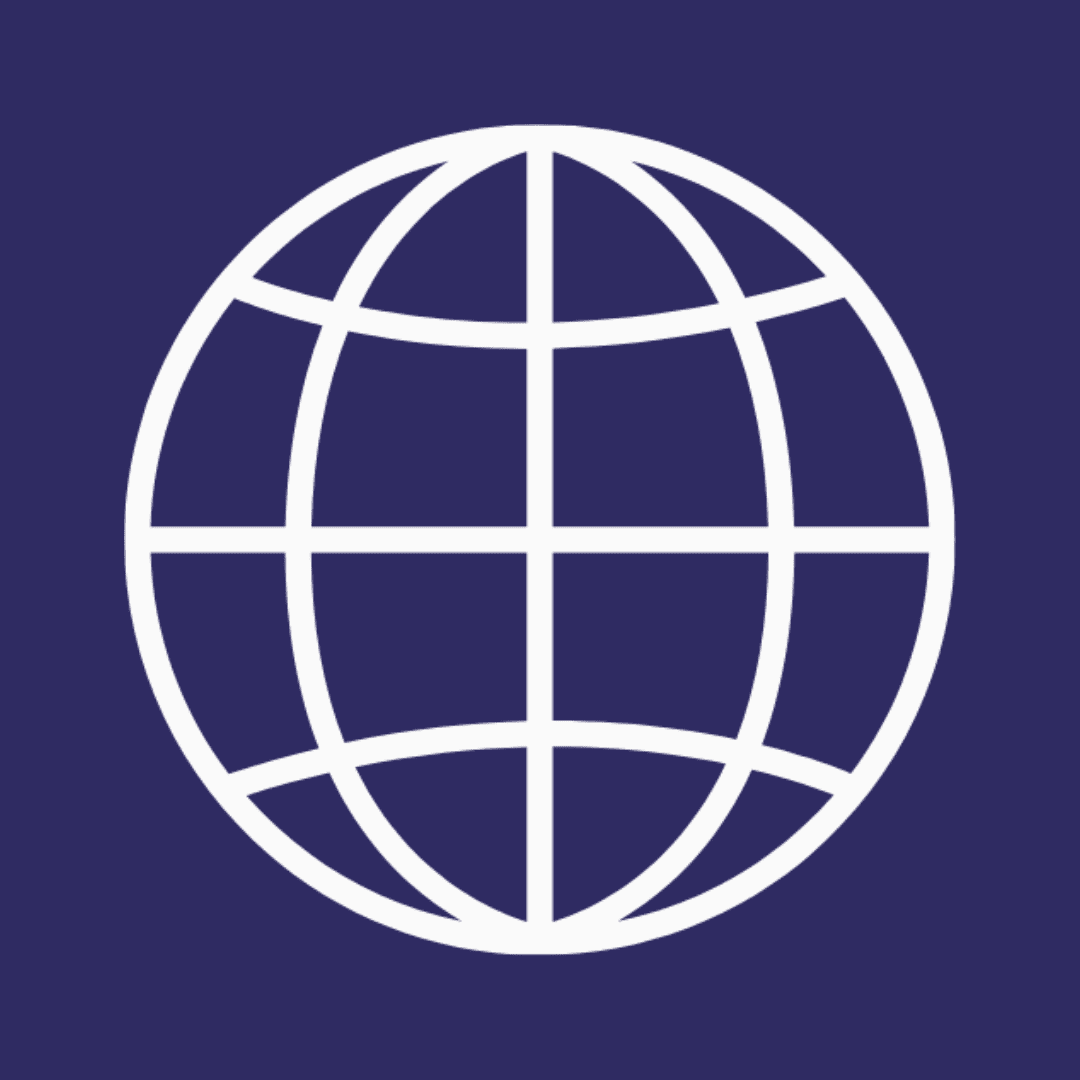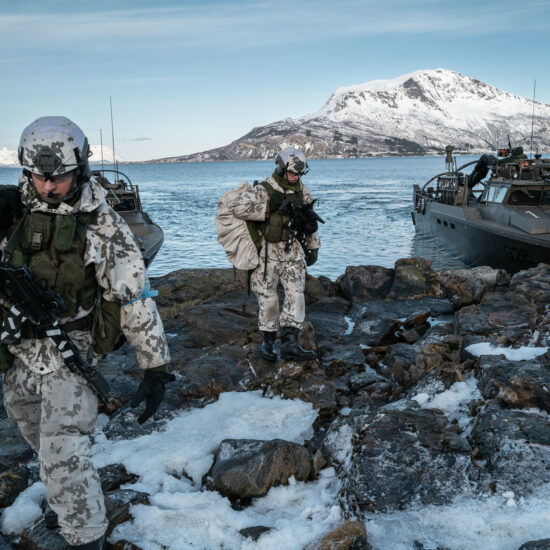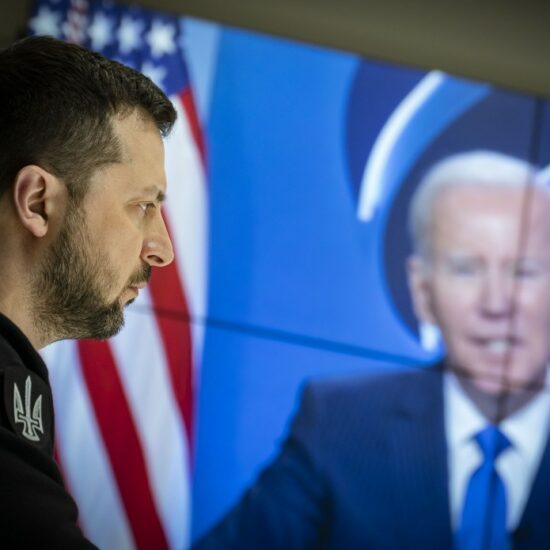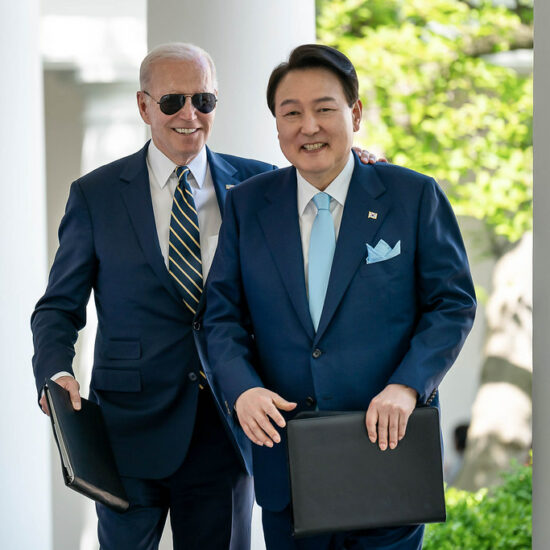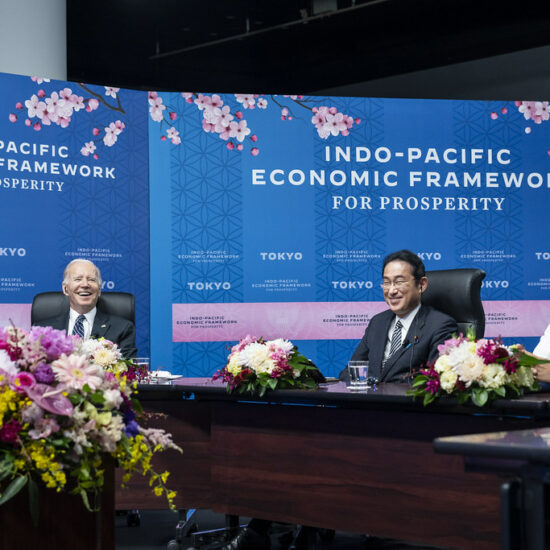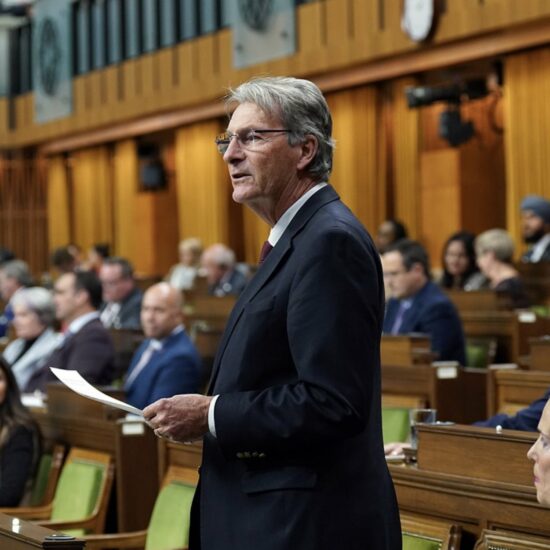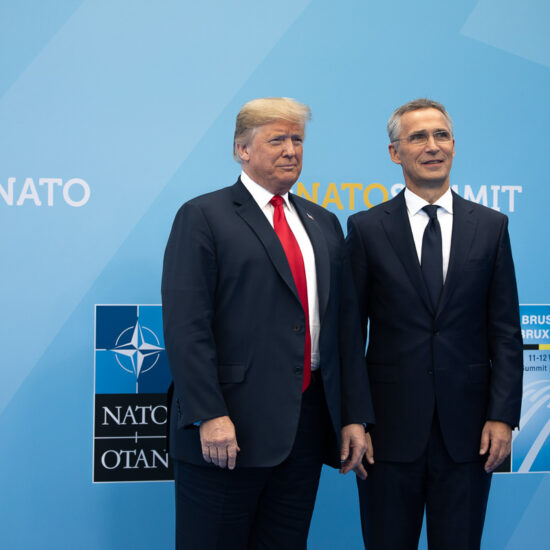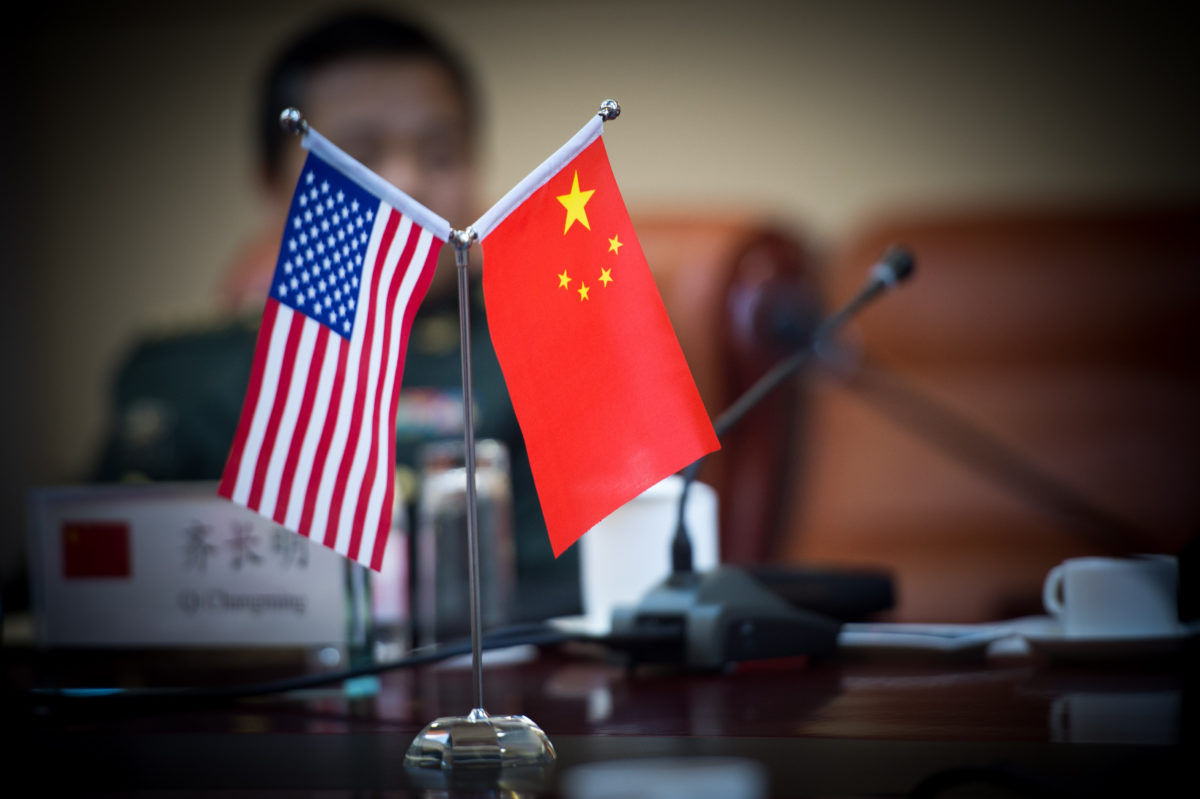
Image credit: U.S. Army
By Amadeus Narbutt
BETWEEN THE STUMBLING ELEPHANT AND THE RISING DRAGON: CANADA’S PLACE IN THE US-CHINA FEUD AND THE GLOBAL ECONOMIC REORGANIZATION
Introduction
In a speech at the Washington Press Club on the topic of American-Canadian relations, former Canadian Prime Minister Pierre Trudeau famously stated that “living next to you is in some ways like sleeping with an elephant; no matter how friendly or even tempered is the beast… one is affected by every twitch and grunt”. Traditionally, American action on the world stage has been the most impactful factor on Canadian diplomacy. However, with China’s ascendancy on the world stage as a contender for the title of global economic superpower, Canada will need to adjust its diplomatic strategy to both interact with China in a productive manner and deal with the United States’ (US) gradual decline. The ongoing trade war between the US and China is Trump’s reactionary response to an unavoidable remaking of the global economic order. American supremacy on the world stage, particularly in terms of economic power, is coming to an end. This has been clear since the 2008 financial crisis and has only been accelerated under Trump’s presidency. Former President Obama attempted a ‘China pivot’ to refocus American global economic institutionalism in Asia in order to prevent China from building a sizable economic bloc and expanding its trading network. That attempt failed and China is filling the gaps as a result. In the current crisis of American leadership, China is poised to overtake the United States’ position in its entirety. Therefore, it would be a strategic mistake for Canada to completely side with a declining Washington and consequently sacrifice the political capital necessary to deal with China in a constructive manner.
Trump’s Farce & The Deficit Mirage
The trade feud between the US and China is largely a farce conducted by President Trump for electoral purposes. However, it is still an overall response to the real phenomenon of American economic decline. ‘Tough on China’ rhetoric polls well with Trump’s base as well as with Democrats. As the United States gradually declines from its place as the leader of the global economic order – a position it has held since the Second World War – reactionary attacks on the new rising power are attractive to voters. Pew Research shows that there is a general bipartisan agreement about the threat that a rising China poses to American supremacy. Richard Wolff, UMass Amherst’s professor of economics describes the entirety of the trade war as a form of ‘political theatre’ to cast China as a villainous actor, weaponizing this public sentiment. Wolff outlines three falsehoods that are widely spread about the entire affair.
First, President Trump claims that the tariffs imposed on Chinese goods cost the Chinese government. This is blatantly false. A tariff is a tax on imports, and it is the (usually US-owned) importers who pay the tax. These costs are then passed on to American consumers with not much impact on the Chinese economy. While the increased costs do drive down demand for tariffed Chinese goods, thus cutting into Chinese profits, Scotiabank deputy chief economist Brett House agrees that the tariffs are “purely cosmetic”. House further states that the 10% currency depreciation that China has allowed has “completely wiped out” any of these effects.
Second, Wolff challenges the claim that China has engaged in intellectual property (IP) theft, calling the accusation ‘bizarre’. Yu Yongding of the Institute of World Economics and Politics echoes Wolff’s skepticism, stating that the Section 301 trade investigation launched by Trump’s administration which made claims about IP theft is misleading. Most of these cases are the result of voluntary technology transfer, which is completely allowable under WTO rules, in exchange for the favourable investment environment and low-wage labour that China provides. Furthermore, the Section 301 investigation itself acknowledges that since an agreement by the US and China in 2015, incidents of cyber-espionage by China has also declined.
Third, the claim that China has been ‘cheating’ the global economy through state subsidization of industry is shown as incredibly hypocritical. Wolff specifically points to Trump’s tax cuts for US business as a state-sponsored competitive advantage for US business, but he could just as easily point to the grotesque levels of subsidies by the US government for areas like oil and coal or agriculture, amounting to tens of billions of dollars annually. Canada is also ‘guilty’ of this same subsidization, which can most obviously be seen in cases like the Trans-Mountain pipeline, where the Canadian government is boosting the viability of the Canadian oil sector through the infusion of $4.5 billion of state funding.
Trump’s blustering anti-China policy has created unprecedented backlashes against the American economy, particularly in terms of retaliatory tariffs by the Chinese government. American agriculture has taken the largest hit, particularly damaging Trump’s image with his large base in the rural Midwest, hinting that the Chinese government might be applying these tariffs with the tactical intention of impacting the US elections in 2020. The Trump administration has resorted to billions of dollars in aid packages to farmers who have felt the squeeze from the trade war. This counter-move seems to have succeeded, as Trump’s polling numbers in key Midwest swing states have remained stable.
Trump’s rhetoric has been guided by a severe misunderstanding of America’s place in the global economic order. President Trump has repeatedly raged against the US trade deficit with other countries such as Mexico and Canada during previous trade disputes. The current dispute with China is no different, with Trump repeatedly bringing up the US trade deficit with China as a rationale for tariffs. However, not only are tariffs ineffective at combating trade imbalances, but the US trade deficit is not damaging to the US economy. It has, in fact, been the driver of the global economic order since the fall of Bretton Woods in 1971. Economist Yanis Varoufakis’ book The Global Minotaur describes how this global economic order developed and functioned. After the fall of Bretton Woods and the return of the global economy to one of fluctuating exchange rates, the US economy began absorbing the surplus industrial products of the rest of the world. Due to the supremacy of the US dollar as the global reserve currency and the ability of Wall Street to financialize capital and create a higher rate of returns than any of its competitors, the profits earned from the exports of other nations were voluntarily sent to Wall Street in search of high yields.
This tribute of capital fueled what Varoufakis calls ‘the Global Minotaur’ of the ‘twin deficits’ of the United States: its budget deficit and its trade deficit. Borrowing the analogy of the Minotaur of Ancient Greece, Varoufakis explains that these influxes acted as tributes to sustain the Minotaur and deepen the American deficits, as the global economy now spun upon their axis. Wall Street, with a huge influx of capital being injected into it daily, would use these huge sums for three purposes: (a) to provide credit to Americans, (b) to provide direct capital investment into American firms, (c) and to provide credit to the American government in the form of US Treasury bond purchases. These actions stimulated domestic demand for imports, which fuelled the economy of industrial nations around the world, and in sum acted as a ‘global surplus recycling mechanism’ (GSRM), which kept capital flowing sustainably around the globe.
To put this into perspective, on an average year after its rise in the 1970s, the Minotaur was absorbing 70% of total global capital flows. By 2003, the majority of those flows came from China. However, Varoufakis claims that in the 2008 crash, the Minotaur died. The capacity of Wall Street to effectively recycle global surpluses has diminished in accordance with declining investor confidence and left the global economy in a state of ‘bankruptocracy’ while the flow of surpluses stumble and economies around the globe are desperately implementing various forms of quantitative easing, austerity, or stimulus to regain some level of sustainable economic growth. Recently, the US Treasury yield curve – one of the most accurate predictors of a US recession – went off. The Canadian yield curve has followed, highlighting the intertwined nature of the American and Canadian economies. In response to this global unease, Trump is lashing out at a mirage of the former economic order: the trade deficit that once fueled it. However, Varoufakis also notes the ‘awkward fact’ that more than half of this deficit is now due to American-owned corporations exporting US-branded goods from China into America. Thereby, if Trump is so concerned with the trade deficit, his feud should be with Apple CEO Tim Cook, not with Chinese officials.
Yet, it is important to note that Trumps’ misguided trade policy has not only affected US-China bilateral trade relations, but it has had detrimental impacts on the global multilateral trading system. Chad P. Bown and Douglas A. Irwin note that Trump’s trade war is purposefully ‘de-coupling’ the trade relationship that China and the US have held for decades, which will trigger a global realignment. The authors stress that such a realignment will not be reversible should Trump not be re-elected in 2020; the repercussions of Trump’s bluster will be permanent. What will be required in this inevitable realignment is some new global surplus recycling mechanism (GSRM) to emerge and restabilize global capital flows and fuel sustainable growth. Canada’s aim, if it intends to effectively participate in the global economic reorganization that is required, should be to ensure that dialogue between the economic powerhouses of the world is peaceful, constructive, and multilateral.
A New GSRM
Dominique Strauss-Kahn, former managing director of the International Monetary Fund (IMF), stated in a BBC interview that “Never in the past has an institution like the IMF been as necessary as it has been today… Keynes, sixty years ago, already foresaw what was needed; but it was too early. Now is the time to do it.” Varoufakis claims the ‘it’ Strauss-Kahn was referring to is some form of an institutionalized GSRM – the kind that Keynes proposed at the Bretton Woods conference, but it was rejected. As Keynes explained at Bretton Woods, the problem with international trade is that imbalances can develop. When deficits accumulate, domestic debt or currency depreciation follows, often causing crashes and leading to global economic instability. What Keynes had proposed was a globally institutionalized surplus recycling mechanism; one that would automatically transfer capital from surplus states and invest in deficit states in order to achieve a global balance and sustainable growth.
At the Bretton Woods conference, this proposal was rejected by the American representative because the US was the only sizable surplus nation after the Second World War, assuming that it would remain in such a position for decades. Therefore, the Americans desired maximum discretion and liberty to recycle their surpluses, rather than to be forced to do so through institutional compliance. And, in fact, the value of surpluses that were recycled under American leadership was greater in the first 15 years post-war period than what Keynes had envisaged. Most of the surpluses were recycled through the gargantuan sums of investment in the Marshall Plan. However, when the US lost its trade surplus status in the 1970s, the Bretton Woods system – which had been built upon the recycling of US surpluses – fell apart. Now, since the fall of the Minotaur in 2008, where the US recycled surpluses by expanding its own deficit, a new contender is required to recycle global surpluses in a more sustainable manner.
The interconnectedness of European economies and the scale of the free trade area that the process of European integration has produced may lead one to believe that the EU could serve as the bedrock for a new GSRM. Further, Canada would be well placed to participate in the construction of such a European-based system, especially in light of new expanded trade agreements and productive bilateralism in recent diplomatic forums. However, the incomplete nature of EU integration and its internal divisions on the subject of monetary and macroeconomic policy has led to a state of crisis, perpetually instituting piecemeal and incremental reform that has been described as ‘falling forward’. This kind of unambitious economic policy, still ideologically mired in austerity, has been responsible for internal crises in Italy and Greece, and is unsuited for the scale of action required. Whereas the EU has proposed a sovereign wealth and investment fund of €100 billion, for comparison, the GSRM discussed by Varoufakis averaged inflows of $3 to 5 billion every working day for more than 40 years. With no globally instituted system on the horizon, and US global leadership disintegrating under the sporadic direction of President Trump, there is only one serious contender for the role: China.
The growth of the Chinese economy since the 1970s has been unprecedented, with the World Bank describing it as the “fastest sustained expansion by a major economy in history”. The statistics are startling. In terms of purchasing power parity (PPP), the Chinese economy overtook the US as the largest economy in the world in 2014. From a different perspective, since 1980 the Chinese share of global GDP when denominated in PPP rose from 2.3% to 18.3% while the US’s share fell from 24.3% to 15.3% in the same period. The Chinese government has embarked on an ambitious investment project called the ‘Belt and Road Initiative’ (BRI), an approximately $1 trillion dollar array of investments in trade, transport, and shipping infrastructure around the world. Described as a ‘Marshall Plan for Asia’ or alternatively as a ‘new Silk Road’, it is China’s attempt to create a new economic bloc centered around Beijing. Through this effort, China has positioned itself as a ‘patient’ and ‘long-term’ investor and has already made sizable investments abroad. As of May 2019, more than sixty countries have signed on or indicated an interest in signing on to Chinese-financed projects as part of the BRI, mostly across Central and South Asia, Oceania, Africa, and around the Mediterranean. These investments have even begun to eat into the EU’s backyard, with Italy and Greece both becoming sites of investment for the BRI. The contrast between Chinese ambition and EU complacency is most evident in the fact that these two EU states, who have felt abandoned by EU austerity, are setting their sights to Beijing for stable investment. Gideon Rachmann, foreign affairs commentator for the Financial Times, in his book Easternization, describes China’s unprecedented expansion in both trade and investment in states like Brazil, Nicaragua, Djibouti, and India. Most important, however, is China’s attempt to push back at what Rachmann calls ‘America’s institutional advantage’. In 2014, China moved ahead with plans to form a BRICS bank and an Asian Infrastructure Investment Bank (AIIB), which Rachmann claims is a reaction to the Western bias of Bretton Woods institutions like the IMF and World Bank. Moreover, China recently began modernizing its internal investment policy to make the investment and management of finances within China more stable, transparent, and trustworthy, no doubt in an attempt to present itself as an alternative destination for capital.
Major General Qiao Liang describes the BRI as a “hedge strategy against the eastward move of the US”, referring to President Obama’s attempts at a ‘China pivot’. Further, he gives credence to the aforementioned analysis of former US trade and economic supremacy as the pivotal factor in the current global economic reorganization. He also mentions the importance of the huge capital flows of Varoufakis’ Minotaur as being a function of the supremacy of the US dollar as a global reserve currency, and states that it is now “China’s turn”. Dr. Usman Chohan, draws a direct comparison between Varoufakis’ Minotaur and the rise of the BRI, claiming that the BRI is being modeled as a 21st century surplus recycling mechanism for the growing Chinese economic bloc, and specifically points to the growing triple surpluses China must recycle over the coming decades: in industrial output, labour, and financial capital. In sum, China’s BRI is certainly set to become a new surplus recycling mechanism for China’s growing surpluses and may qualify as the new GSRM. The global nature of this recycling mechanism will depend on the depth and breadth of China’s expansion, and upon the success of rivals to Bretton Woods institutions like China’s BRICS bank and AIIB. Rachmann claims that these efforts will be aided by the US abuse of its institutional power. Under Trump’s sporadic leadership, this is already happening with the Europeans creating a new special-purpose vehicle mechanism to facilitate non-USD transactions and non-SWIFT in order to circumvent US sanctions.
Canada’s Place in the Equation
Where does Canada stand in this reorganization? Canada has had a history of positive multilateral diplomacy on the world’s stage and it has built a reputation of enthusiastic participation and active engagement in numerous international forums, particularly under the leadership of Prime Minister Trudeau. However, his government’s diplomacy with China has been less fruitful.
Chinese-Canadian relations have been rocky since 2018, when Canadian border agents arrested Meng Wangzhou in December 2018 as she passed through Vancouver’s airport. Wangzhou is CFO of Huawei, a Chinese telecom company on the cutting edge of advances in 5G telecommunications technology. Though currently free on bail and living in Vancouver, Meng has become a pawn in the diplomatic tensions between China, Canada, and the United States. Canadian authorities arrested Meng at the request of US law enforcement who requested her to be extradited to the United States. The US has alleged that Huawei is a dangerous company with corrupt ties to the Chinese government that violates US sanctions by dealing with countries such as Iran. More importantly, it has subsequently requested that its allies including canada avoid using any telecommunications equipment supplied by the company. In response, China arrested two Canadians, charging them with espionage and has since sentenced a third to death. In addition, the Chinese government has blocked Canadian canola imports along with all meat imports. In light of staggering protests in Hong Kong, the Canadian Government has rightfully stood up for basic democratic rights. However, this has only further deteriorated its relationship with the rising economic powerhouse in Asia, one that is increasingly crucial to Canada’s economic well-being.
Canada’s trade relationship with China has grown significantly in the past decade, with imports rising 75% from $26.39 billion in 2010 to $46.15 billion in 2018, and exports rising by 105% from $14.14 billion to $29.04 billion in the same period. Even without a free trade agreement, China is now Canada’s second largest trading partner, only behind the United States. For China, however, Canada is less important, ranking as its 20th largest export market and 19th largest source of imports. Sarah Pittman of the Canada West Foundation discusses how the newly signed United States-Mexico-Canada Agreement (USMCA) contains provisions, which could hinder Canada’s from furthering its economic ties with China in the future. Article 32.10 of the USMCA, also known as the “Non-Market Country FTA” clause, allows for any member of the USMCA to unilaterally pull out of the agreement if another signatory enters a free trade agreement with a ‘non-market country’, a status which China holds according to the World Trade Organization (WTO). Consequently, Canada’s ability to further its economic relationship with China is held hostage by the necessity of Trump’s blessing to do so.
Conclsuion
In sum, it seems that Trudeau’s China policy is stuck in a bind. While the Canadian government is right to stand up for human rights abroad, it has decided to do so in an incoherent manner. China’s disregard for human rights should be challenged, but opposing China by siding with the misguided and sporadic China policy of the Trump administration is startlingly short-sighted. However, siding with the Trump administration in its current feud with China is necessary to have President Trump on board with any further advancement of Canada’s trading relationship with China. Thus, in the short term, it seems that Trudeau may be aiming to wait out Trump’s trade war, hoping that Trump’s bluster will culminate in an eventual deal, which returns the feud to a state very similar to the pre-trade war status quo. Such a move would echo the strategy Trump has used in previous years of canceling deals in order to ‘re-negotiate’ a ‘better’ deal that is hardly a departure from the original. It is, in fact, the same tactic used in the redrafting of NAFTA into the USMCA, and likely the script that will play out in regards to the JCPOA and Iran. However, as noted by Bown & Irwin above, the changes that are accompanying Trump’s trade war are not reversible to the previous status quo, and Trump’s assault on the WTO goes beyond surface-level reforms.
Thus, Trudeau’s gamble comes at the expense of tarnished Canadian political capital vis-a-vis diplomacy with China. He may hope for some short-term success in the unlikely case that the US-China trade feud blows over. However, when a longer-term view is taken, one that incorporates the reorganization of the global economy and the central role that China is likely to play in the 21st century economic order, it is a trade-off that does not seem rational. Instead, Canada should use its global reputation for multilateral diplomacy to advocate for a globally-instituted surplus recycling mechanism, of the kind that Keynes advocated at Bretton Woods. Such a system would encourage stable and sustainable growth to be able to direct the investment of capital into areas of the world that require assistance in de-carbonization, the building of institutional capacity, and further connection to global trade infrastructure. Such a system, if fair and multilateral, could achieve many of the positive ends – in terms of increased investment in the Global South – that the BRI is aiming to meet, but without the neo-colonial debt traps that China is setting for many of the states that join into its bloc.
China is an economy that is on the rise, and whether Trump likes it or not, it is their surpluses that are going to be recycled for the near- to mid-term future. This is the same position that the US was in after WW2 when it rejected Keynes’ proposal for an institutionalized GSRM. It is imperative that international multilateral diplomacy, of which Canada can and should play a part, discourages China from making the same decision that the United States made in 1944. That is where the pressures of human rights-focused pressures should come into play, to push China into a more multilateral dialogue that can build a more multilateral world, rather than simply give rise to a new hegemon.
